Maor Ivgi
From Loops to Oops: Fallback Behaviors of Language Models Under Uncertainty
Jul 08, 2024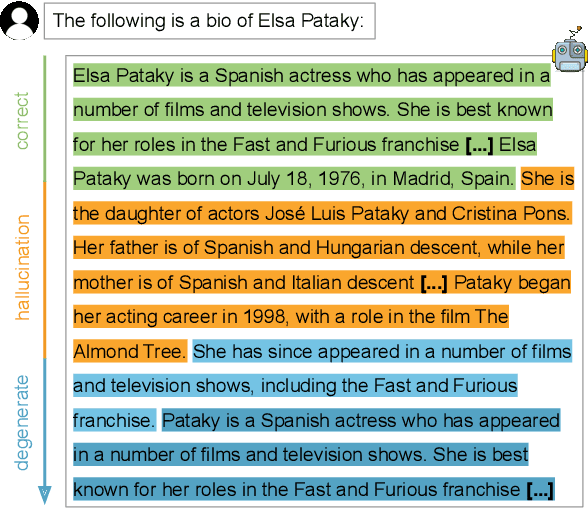

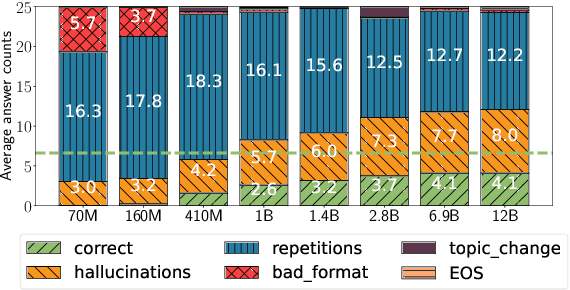
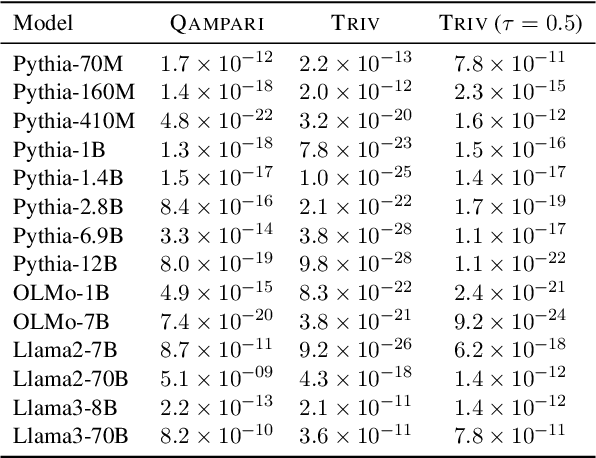
Abstract:Large language models (LLMs) often exhibit undesirable behaviors, such as hallucinations and sequence repetitions. We propose to view these behaviors as fallbacks that models exhibit under uncertainty, and investigate the connection between them. We categorize fallback behaviors -- sequence repetitions, degenerate text, and hallucinations -- and extensively analyze them in models from the same family that differ by the amount of pretraining tokens, parameter count, or the inclusion of instruction-following training. Our experiments reveal a clear and consistent ordering of fallback behaviors, across all these axes: the more advanced an LLM is (i.e., trained on more tokens, has more parameters, or instruction-tuned), its fallback behavior shifts from sequence repetitions, to degenerate text, and then to hallucinations. Moreover, the same ordering is observed throughout a single generation, even for the best-performing models; as uncertainty increases, models shift from generating hallucinations to producing degenerate text and then sequence repetitions. Lastly, we demonstrate that while common decoding techniques, such as random sampling, might alleviate some unwanted behaviors like sequence repetitions, they increase harder-to-detect hallucinations.
DataComp-LM: In search of the next generation of training sets for language models
Jun 18, 2024



Abstract:We introduce DataComp for Language Models (DCLM), a testbed for controlled dataset experiments with the goal of improving language models. As part of DCLM, we provide a standardized corpus of 240T tokens extracted from Common Crawl, effective pretraining recipes based on the OpenLM framework, and a broad suite of 53 downstream evaluations. Participants in the DCLM benchmark can experiment with data curation strategies such as deduplication, filtering, and data mixing at model scales ranging from 412M to 7B parameters. As a baseline for DCLM, we conduct extensive experiments and find that model-based filtering is key to assembling a high-quality training set. The resulting dataset, DCLM-Baseline enables training a 7B parameter language model from scratch to 64% 5-shot accuracy on MMLU with 2.6T training tokens. Compared to MAP-Neo, the previous state-of-the-art in open-data language models, DCLM-Baseline represents a 6.6 percentage point improvement on MMLU while being trained with 40% less compute. Our baseline model is also comparable to Mistral-7B-v0.3 and Llama 3 8B on MMLU (63% & 66%), and performs similarly on an average of 53 natural language understanding tasks while being trained with 6.6x less compute than Llama 3 8B. Our results highlight the importance of dataset design for training language models and offer a starting point for further research on data curation.
In-Context Learning with Long-Context Models: An In-Depth Exploration
Apr 30, 2024Abstract:As model context lengths continue to increase, the number of demonstrations that can be provided in-context approaches the size of entire training datasets. We study the behavior of in-context learning (ICL) at this extreme scale on multiple datasets and models. We show that, for many datasets with large label spaces, performance continues to increase with hundreds or thousands of demonstrations. We contrast this with example retrieval and finetuning: example retrieval shows excellent performance at low context lengths but has diminished gains with more demonstrations; finetuning is more data hungry than ICL but can sometimes exceed long-context ICL performance with additional data. We use this ICL setting as a testbed to study several properties of both in-context learning and long-context models. We show that long-context ICL is less sensitive to random input shuffling than short-context ICL, that grouping of same-label examples can negatively impact performance, and that the performance boosts we see do not arise from cumulative gain from encoding many examples together. We conclude that although long-context ICL can be surprisingly effective, most of this gain comes from attending back to similar examples rather than task learning.
Accelerated Parameter-Free Stochastic Optimization
Mar 31, 2024Abstract:We propose a method that achieves near-optimal rates for smooth stochastic convex optimization and requires essentially no prior knowledge of problem parameters. This improves on prior work which requires knowing at least the initial distance to optimality d0. Our method, U-DoG, combines UniXGrad (Kavis et al., 2019) and DoG (Ivgi et al., 2023) with novel iterate stabilization techniques. It requires only loose bounds on d0 and the noise magnitude, provides high probability guarantees under sub-Gaussian noise, and is also near-optimal in the non-smooth case. Our experiments show consistent, strong performance on convex problems and mixed results on neural network training.
ZeroSCROLLS: A Zero-Shot Benchmark for Long Text Understanding
May 23, 2023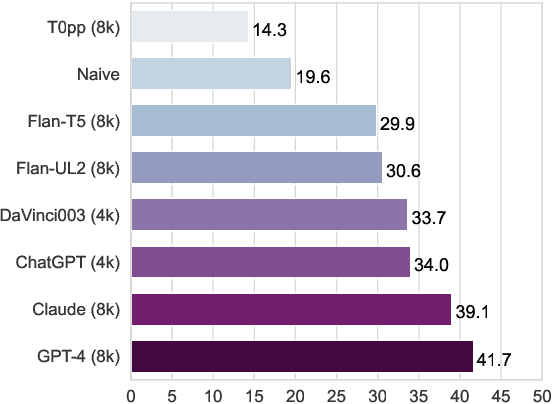

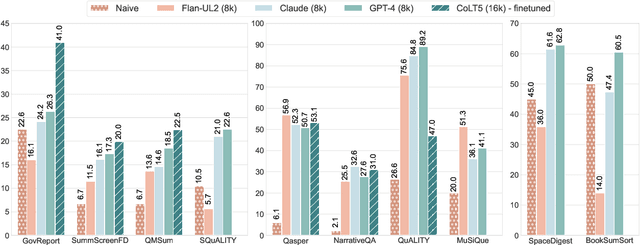
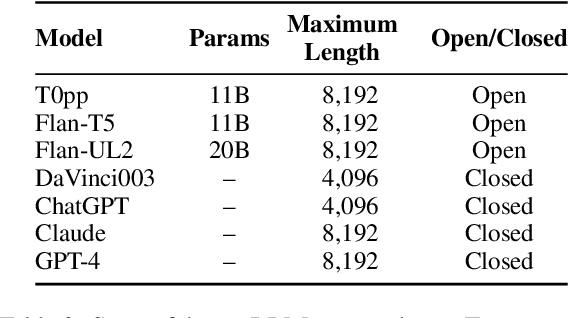
Abstract:We introduce ZeroSCROLLS, a zero-shot benchmark for natural language understanding over long texts, which contains only test sets, without training or development data. We adapt six tasks from the SCROLLS benchmark, and add four new datasets, including two novel information fusing tasks, such as aggregating the percentage of positive reviews. Using ZeroSCROLLS, we conduct a comprehensive evaluation of both open-source and closed large language models, finding that Claude outperforms ChatGPT, and that GPT-4 achieves the highest average score. However, there is still room for improvement on multiple open challenges in ZeroSCROLLS, such as aggregation tasks, where models struggle to pass the naive baseline. As the state of the art is a moving target, we invite researchers to evaluate their ideas on the live ZeroSCROLLS leaderboard
DoG is SGD's Best Friend: A Parameter-Free Dynamic Step Size Schedule
Feb 08, 2023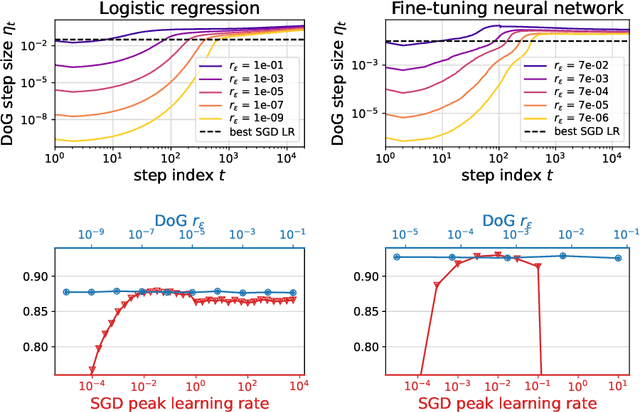
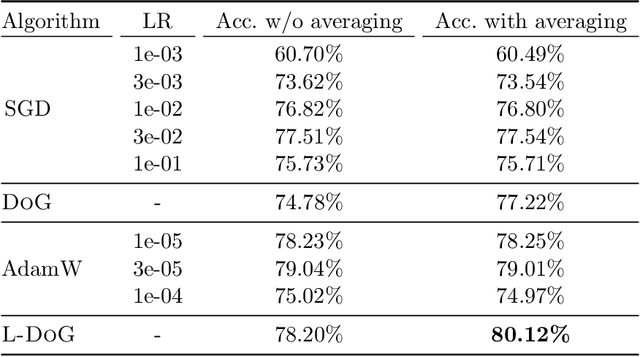

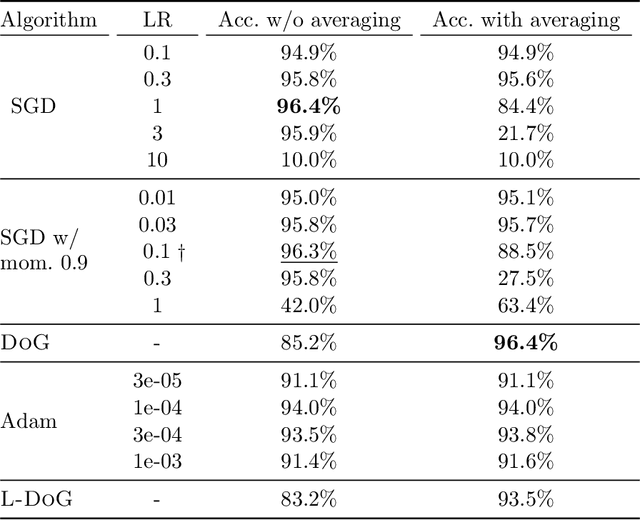
Abstract:We propose a tuning-free dynamic SGD step size formula, which we call Distance over Gradients (DoG). The DoG step sizes depend on simple empirical quantities (distance from the initial point and norms of gradients) and have no ``learning rate'' parameter. Theoretically, we show that a slight variation of the DoG formula enjoys strong parameter-free convergence guarantees for stochastic convex optimization assuming only \emph{locally bounded} stochastic gradients. Empirically, we consider a broad range of vision and language transfer learning tasks, and show that DoG's performance is close to that of SGD with tuned learning rate. We also propose a per-layer variant of DoG that generally outperforms tuned SGD, approaching the performance of tuned Adam.
Efficient Long-Text Understanding with Short-Text Models
Aug 01, 2022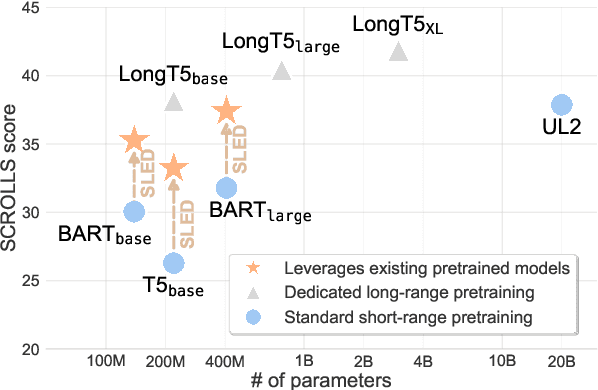
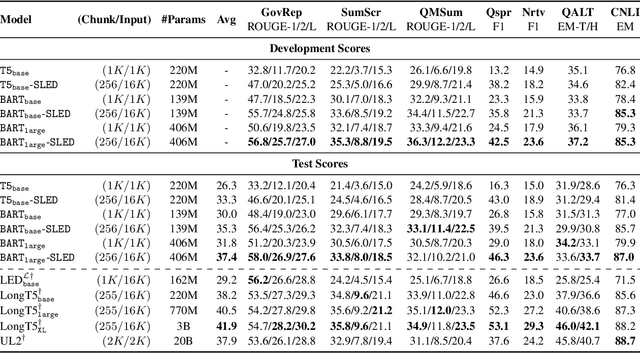

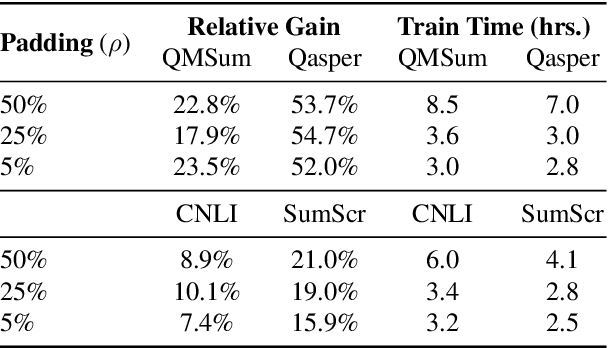
Abstract:Transformer-based pretrained language models (LMs) are ubiquitous across natural language understanding, but cannot be applied to long sequences such as stories, scientific articles and long documents, due to their quadratic complexity. While a myriad of efficient transformer variants have been proposed, they are typically based on custom implementations that require expensive pretraining from scratch. In this work, we propose SLED: SLiding-Encoder and Decoder, a simple approach for processing long sequences that re-uses and leverages battle-tested short-text pretrained LMs. Specifically, we partition the input into overlapping chunks, encode each with a short-text LM encoder and use the pretrained decoder to fuse information across chunks (fusion-in-decoder). We illustrate through controlled experiments that SLED offers a viable strategy for long text understanding and evaluate our approach on SCROLLS, a benchmark with seven datasets across a wide range of language understanding tasks. We find that SLED is competitive with specialized models that are up to 50x larger and require a dedicated and expensive pretraining step.
Scaling Laws Under the Microscope: Predicting Transformer Performance from Small Scale Experiments
Feb 13, 2022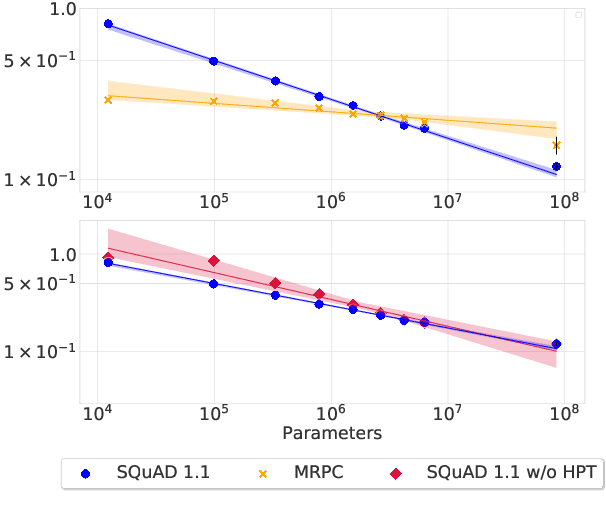
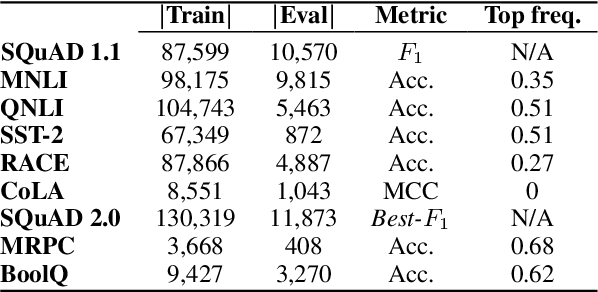
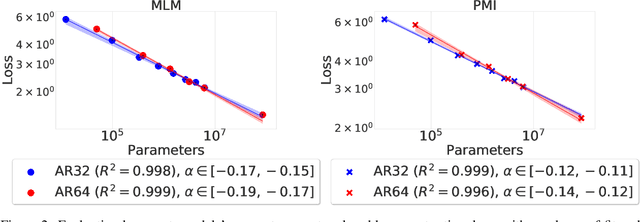
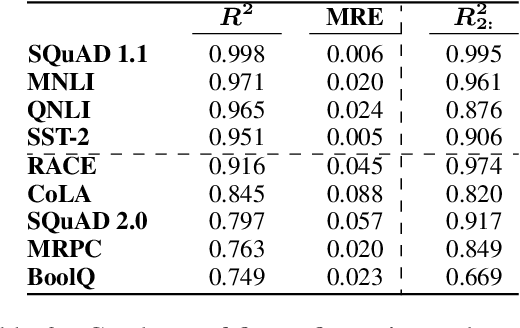
Abstract:Neural scaling laws define a predictable relationship between a model's parameter count and its performance after training in the form of a power law. However, most research to date has not explicitly investigated whether scaling laws can be used to accelerate model development. In this work, we perform such an empirical investigation across a wide range of language understanding tasks, starting from models with as few as 10K parameters, and evaluate downstream performance across 9 language understanding tasks. We find that scaling laws emerge at finetuning time in some NLP tasks, and that they can also be exploited for debugging convergence when training large models. Moreover, for tasks where scaling laws exist, they can be used to predict the performance of larger models, which enables effective model selection. However, revealing scaling laws requires careful hyperparameter tuning and multiple runs for the purpose of uncertainty estimation, which incurs additional overhead, partially offsetting the computational benefits.
SCROLLS: Standardized CompaRison Over Long Language Sequences
Jan 10, 2022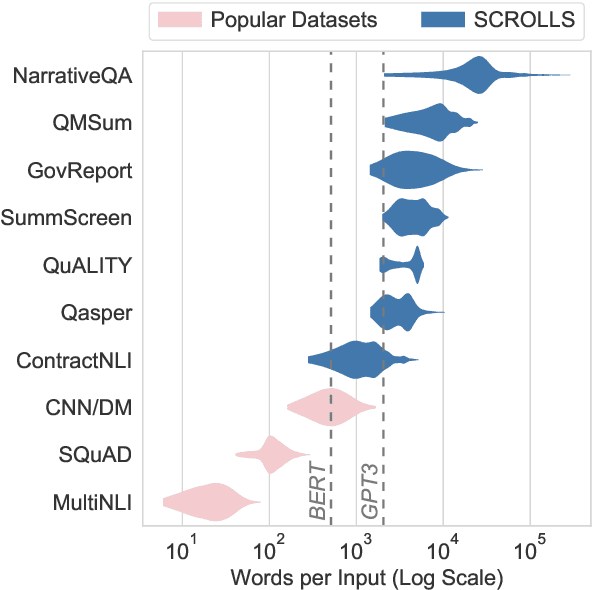

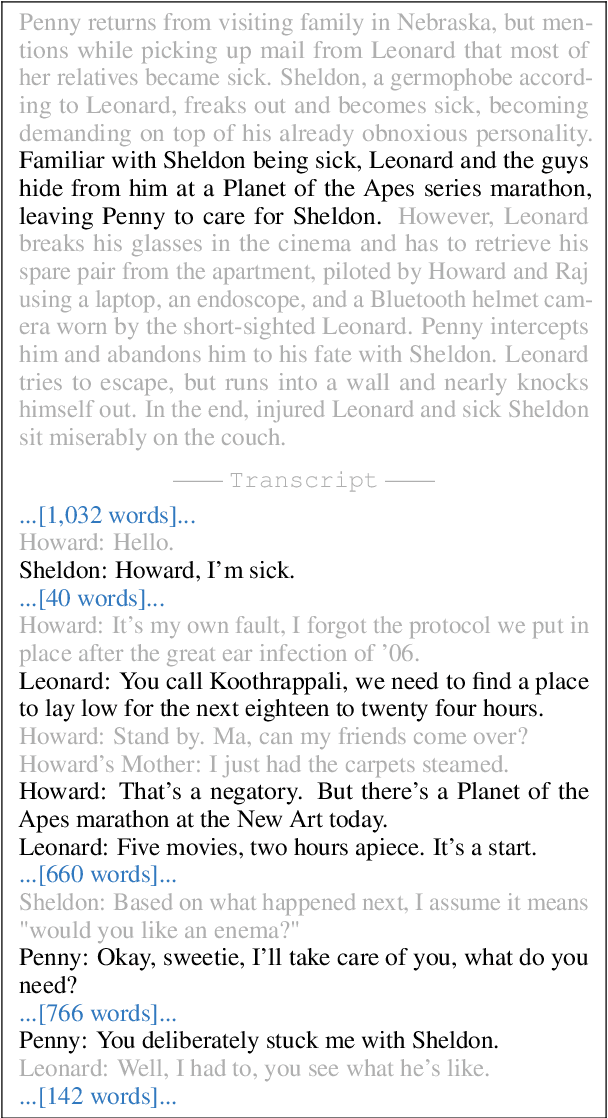
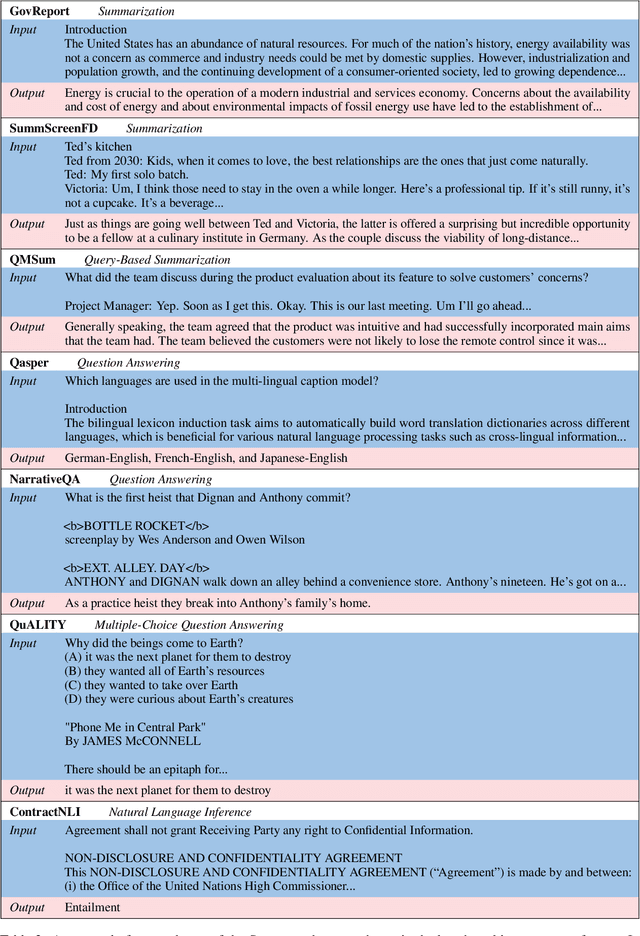
Abstract:NLP benchmarks have largely focused on short texts, such as sentences and paragraphs, even though long texts comprise a considerable amount of natural language in the wild. We introduce SCROLLS, a suite of tasks that require reasoning over long texts. We examine existing long-text datasets, and handpick ones where the text is naturally long, while prioritizing tasks that involve synthesizing information across the input. SCROLLS contains summarization, question answering, and natural language inference tasks, covering multiple domains, including literature, science, business, and entertainment. Initial baselines, including Longformer Encoder-Decoder, indicate that there is ample room for improvement on SCROLLS. We make all datasets available in a unified text-to-text format and host a live leaderboard to facilitate research on model architecture and pretraining methods.
Beyond Importance Scores: Interpreting Tabular ML by Visualizing Feature Semantics
Nov 30, 2021
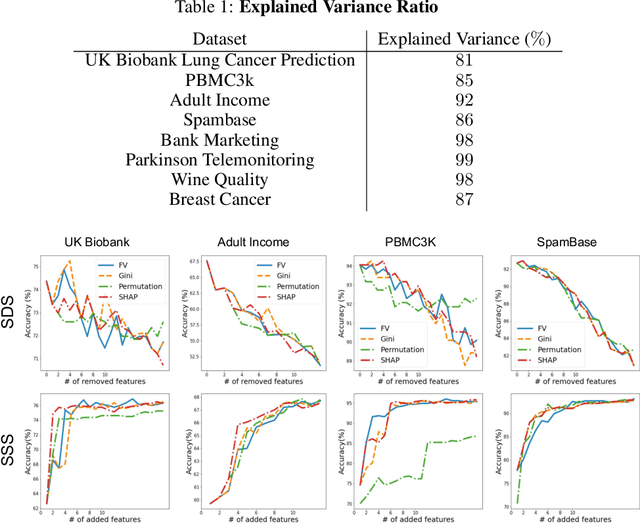
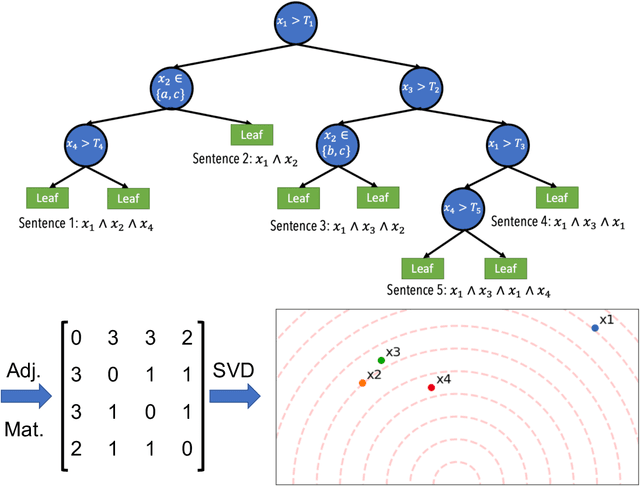
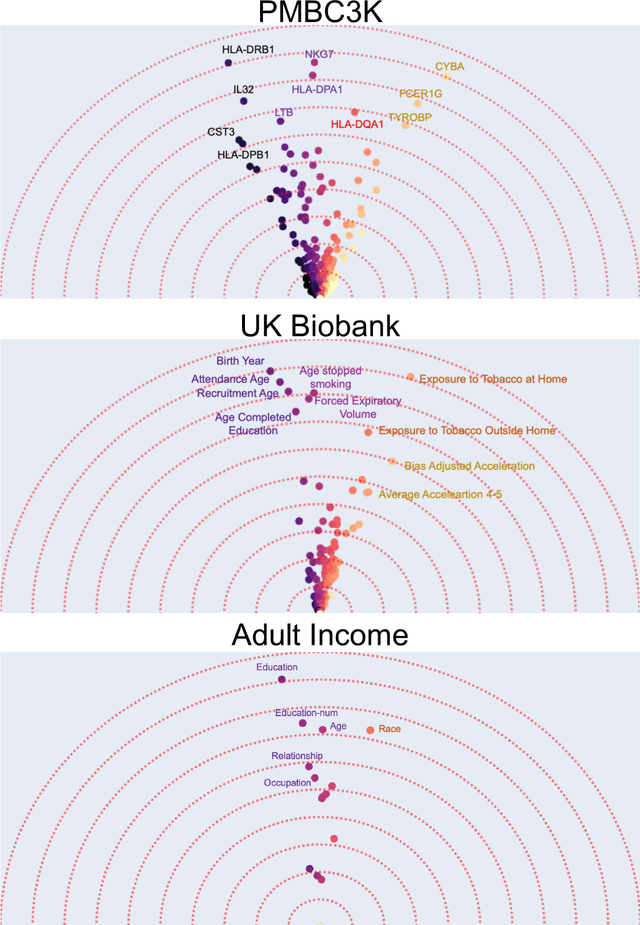
Abstract:Interpretability is becoming an active research topic as machine learning (ML) models are more widely used to make critical decisions. Tabular data is one of the most commonly used modes of data in diverse applications such as healthcare and finance. Much of the existing interpretability methods used for tabular data only report feature-importance scores -- either locally (per example) or globally (per model) -- but they do not provide interpretation or visualization of how the features interact. We address this limitation by introducing Feature Vectors, a new global interpretability method designed for tabular datasets. In addition to providing feature-importance, Feature Vectors discovers the inherent semantic relationship among features via an intuitive feature visualization technique. Our systematic experiments demonstrate the empirical utility of this new method by applying it to several real-world datasets. We further provide an easy-to-use Python package for Feature Vectors.
 Add to Chrome
Add to Chrome Add to Firefox
Add to Firefox Add to Edge
Add to Edge